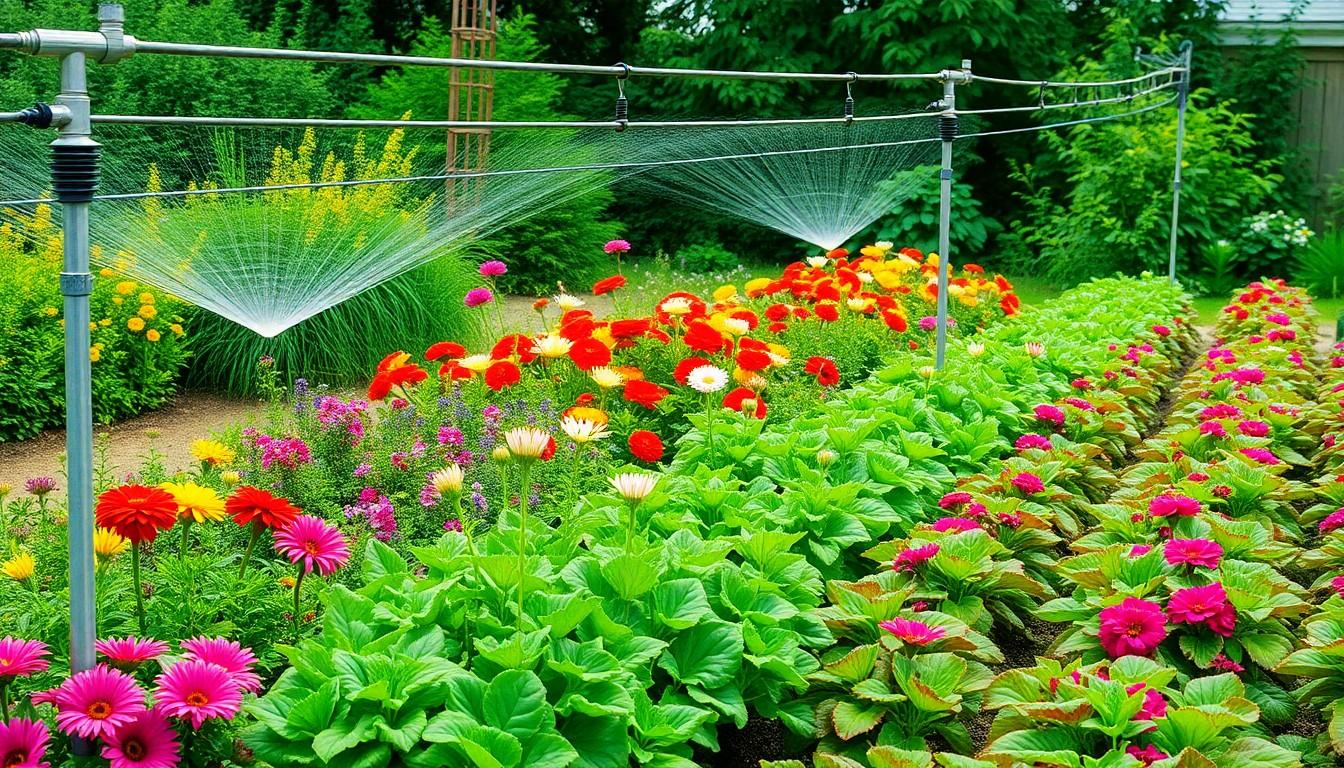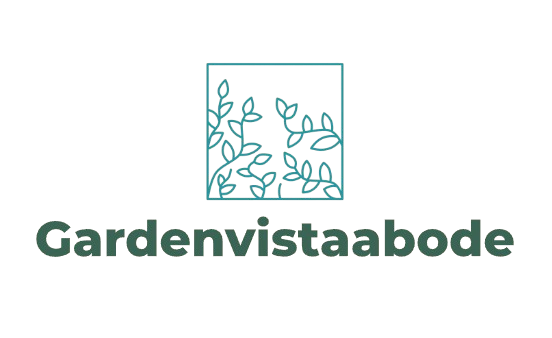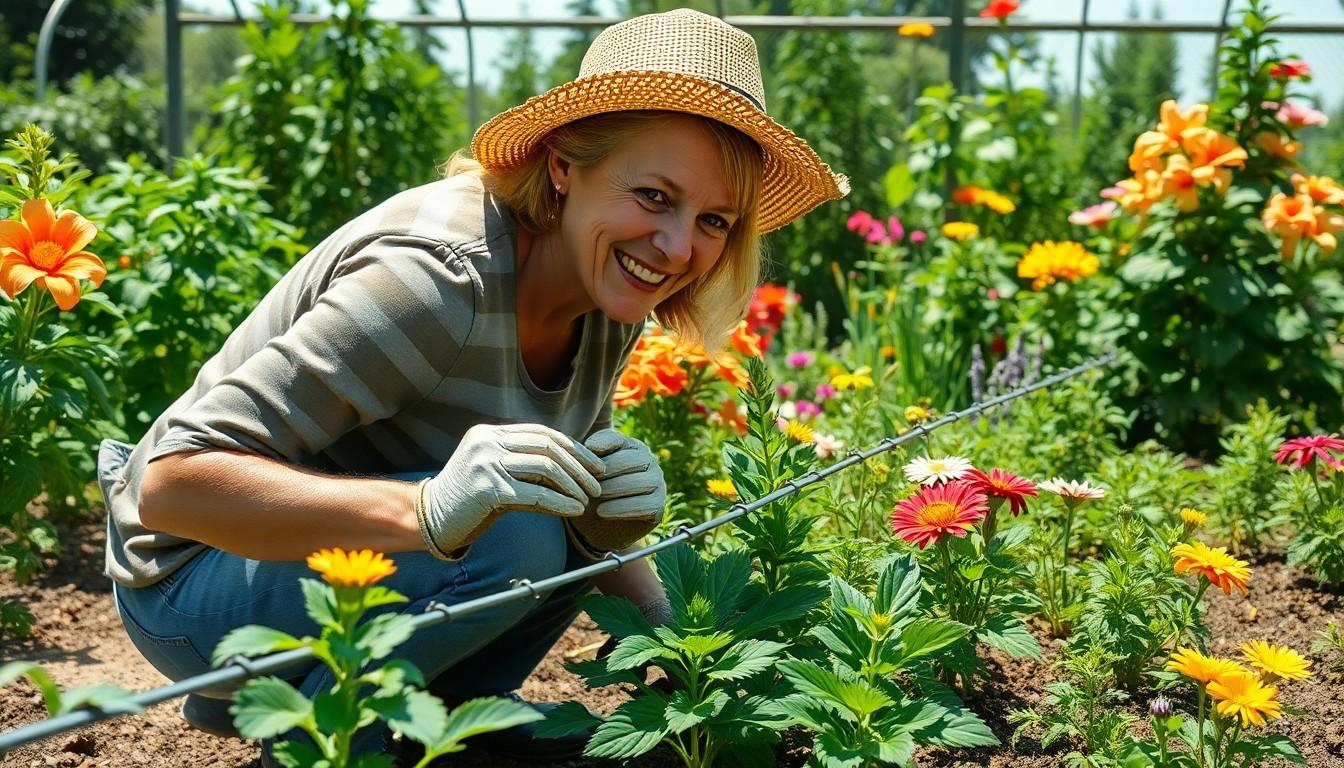Imagine a garden flourishing with vibrant colors and lush greenery, all thanks to a reliable irrigation system. It’s like giving your plants a refreshing drink without the hassle of dragging a hose around. With the right setup, your garden can thrive even during the hottest days of summer, while you kick back with a cold drink, feeling like the ultimate gardening guru.
Overview of Irrigation Systems for Garden
Irrigation systems provide essential water supply for gardens. Gardeners choose various irrigation methods based on plant needs, garden size, and available resources. Common systems include drip irrigation, sprinkler systems, and soaker hoses.
Drip irrigation emits water directly to the plant roots through a network of tubing and emitters. This method minimizes water waste and reduces the risk of disease by keeping foliage dry. For instance, gardens with drought-resistant plants benefit significantly from this efficient method.
Sprinkler systems distribute water over a larger area, ideal for lawns and flower beds. They can be stationary or oscillating, catering to diverse garden layouts. Adjustments allow for specific watering patterns suited to particular garden sections.
Soaker hoses deliver moisture directly to the soil, encouraging deep root growth. Wrapping soaker hoses around garden beds promotes uniform moisture distribution. This low-pressure irrigation solution is beneficial for vegetable gardens or companion planting.
Automated systems enhance convenience, allowing for scheduled watering. Timers and sensors facilitate optimal watering according to weather conditions. Integration with smart technology further simplifies garden maintenance, providing peace of mind.
Choosing an appropriate irrigation system depends on specific garden characteristics. Analyzing soil type, plant selection, and climate helps determine the most effective solution. Each method offers unique benefits, enabling garden flourishing effectively.
Types of Irrigation Systems

Various irrigation systems cater to specific garden needs. Understanding these options enables gardeners to select the best fit for their plants.
Drip Irrigation
Drip irrigation provides precise water delivery directly to plant roots. This method minimizes evaporation and runoff, making it water-efficient. Emitters release water slowly, ensuring soil receives moisture evenly. Ideal for vegetable gardens and flower beds, drip systems reduce weed growth and disease risk. Gardeners can easily customize layouts based on plant spacing and requirements. Timers enhance this system’s effectiveness by automating watering schedules.
Sprinkler Systems
Sprinkler systems cover larger areas effectively, distributing water through spray heads. This option suits lawns and extensive flower beds well. With various styles available, such as stationary and oscillating, gardeners can find a suitable choice for their landscape. Adjustments allow for targeted watering, preventing over-saturation in certain zones. Sprinklers can integrate with smart controllers, optimizing water use in response to weather conditions.
Soaker Hoses
Soaker hoses deliver water directly to the soil through porous materials. They allow moisture to seep slowly, promoting deep root growth. This method is efficient for rows of plants and established gardens. Gardeners appreciate their ease of installation and minimal maintenance. Covering soaker hoses with mulch enhances moisture retention, further benefiting plant health. Those seeking convenience can connect soaker hoses to timers for automatic watering.
Benefits of Using an Irrigation System for Garden
Gardeners enjoy multiple advantages when using an irrigation system that promotes plant health and supports sustainable practices.
Water Conservation
Water conservation becomes paramount when managing a garden. Efficient irrigation systems, like drip irrigation, minimize water waste by delivering moisture directly to plant roots. These systems reduce evaporation and runoff, ensuring that every drop counts. Proper scheduling further optimizes water usage based on specific plant needs and weather conditions. Automated timers and moisture sensors prevent overwatering, making irrigation more efficient. By adopting such systems, gardeners can significantly lower their overall water consumption while maintaining vibrant and healthy plants.
Improved Plant Health
Improved plant health stems from consistent and adequate watering. Irrigation systems provide a stable moisture level, preventing stress that may arise from irregular watering. This stability encourages strong root development and enhances nutrient uptake from the soil. Additionally, targeted watering reduces the risk of fungal diseases caused by excessive moisture on leaves. Fertilizer application becomes more effective when combined with a watering schedule, facilitating better absorption of nutrients. Healthier plants not only thrive but also exhibit increased resistance to pests and diseases, contributing to a more robust garden ecosystem.
Choosing the Right Irrigation System for Your Garden
Selecting an irrigation system requires careful consideration of several factors. Understanding the garden’s specific needs aids in making an informed choice.
Assessing Garden Size and Layout
Garden size influences the irrigation method. Small gardens benefit from drip irrigation, which delivers precise water directly to plant roots. Larger spaces often suit sprinkler systems, allowing for broader coverage and less manual effort. Garden layout also plays a role; irregular shapes might require soaker hoses that conform to the terrain. An effective strategy involves mapping the garden to identify areas that require different watering approaches. A thorough assessment ensures that every part of the garden receives adequate moisture.
Considering Plant Types and Water Needs
Plant types significantly impact irrigation system selection. Vegetables and flowers often have distinct watering requirements. Drought-resistant plants thrive well with less frequent watering through drip systems. Conversely, lush vegetation may necessitate more consistent moisture, making sprinklers ideal. Assessing the water needs of each plant type ensures optimal health and growth. Variability among plants means that customized solutions may result in a more efficient irrigation setup. Understanding these essentials promotes a thriving garden environment.
Installation and Maintenance Tips
Proper installation ensures optimal performance for irrigation systems. Begin by assessing the garden layout, considering factors like plant placement and size. Digging trenches for pipes might be necessary when installing drip irrigation systems, ensuring the hoses lay close to plant roots. For sprinkler installations, positioning heads at equal distances prevents overwatering and dry spots.
Choosing quality materials is essential for longevity. Polyethylene tubing and durable emitters resist damage and wear, promoting longevity. When connecting components, ensure proper fittings to prevent leaks, using Teflon tape for threaded connections.
Maintenance plays a crucial role in system efficiency. Regularly inspecting hoses for clogs helps maintain consistent water flow. Flushing the system at the start of each season eliminates debris buildup, ensuring efficient operation. During winter months, draining systems prevents freezing and damage.
Adapting watering schedules responds to changing environmental conditions. Adjusting timers for seasonal variations maintains optimal moisture levels. Soil moisture sensors provide accurate readings, reducing water waste and improving plant health.
Finally, documenting system adjustments aids in future troubleshooting. Keeping a log of watering times and plant reactions identifies patterns, allowing for better irrigation strategies. Properly maintained systems not only conserve water but also promote flourishing gardens.
Conclusion
A well-designed irrigation system transforms gardening from a chore into a joy. By selecting the right system tailored to specific garden needs, gardeners can ensure their plants receive the moisture they require for optimal growth. This not only enhances the garden’s health but also saves time and energy.
With options like drip irrigation and automated systems, water conservation becomes achievable without sacrificing plant vitality. The right choice leads to flourishing gardens that thrive year-round. Ultimately, investing in an efficient irrigation system is key to cultivating a vibrant and resilient garden ecosystem.

